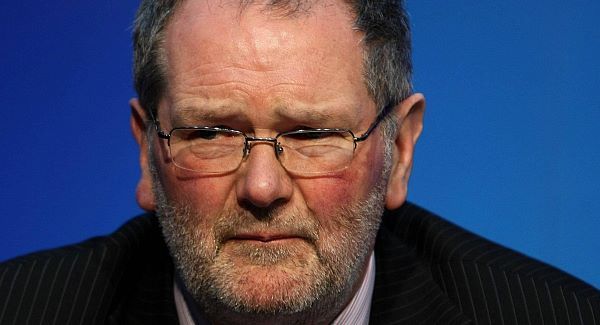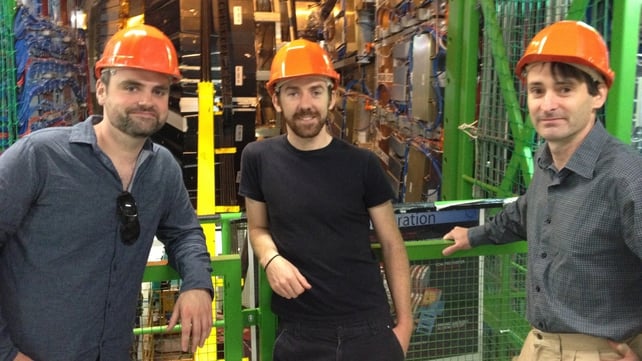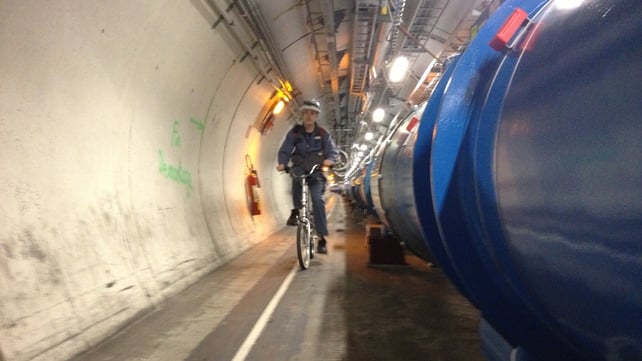Irish drivers boosted by recent fuel price cuts, A study reveals

Cash-strapped motorists have been helped by falling fuel costs at the pump
Drivers are set for a cash boost as fuel prices are falling, a study has revealed.
The cost of diesel and petrol has dropped significantly this month, a survey of prices at the pump by AA Ireland showed.
At the moment, petrol costs around 154.5c per litre – a drop of 2.9c since last month.
While the price of diesel has fallen even further, costing on average 144.4c per litre – 3.6c cheaper than June.
Conor Faughnan, director of policy at The AA, said: “While a drop in fuel prices is always welcome, filling up in Ireland is still extremely expensive.
“Tax plays a huge part in the cost of fuel in Ireland.
“The service station owners don’t reap much of the rewards for increased prices, most of what you’re paying is in tax.”
It emerged the cost of petrol and diesel started to drop in March.
Since then, petrol has decreased by 7.6c per litre and diesel by 10.7c.
Drivers pay out hugely through a combination of excise duties – carbon tax and VAT (57% of the price of diesel and petrol is tax).
An Irish car clocking up average mileage (12,000 miles per year) will use 1,800 litres of fuel per year or 150 litres a month.
With the price of fuel now, this means drivers will pay €231.75 this month for petrol, with €132.10 of this tax.
Mr Faughnan said yesterday: “Ireland is an island nation and we need road transport for business. The current policy of super-high taxes on fuels hits Irish businesses as well as ordinary motorists.
“It is in effect an anti-stimulus measure that increases transportation and business costs across the board.”
Although the news fuel prices are falling is welcomed, it may be short-lived as oil costs have started to rise amid political turmoil in the Middle East. Over the past week, there have been increases in fuel prices in the USA and a rise in European wholesale prices.
However, it has emerged diesel motorists are faring a little better than petrol drivers and there has been a big increase of diesel cars on the roads.
Mr Faughnan added: “There is much to be said for buying a diesel car especially if you are doing higher mileages. The lower tax and fuel cost is quite attractive.
“However, the price of the vehicle and the higher cost of maintenance may deter would-be buyers.”
Irish Cyclists to face on-the-spot fines for breaking traffic laws
NEW PENALTIES TO BE INTRODUCED FROM 2014
On-the-spot fines for traffic violations will be extended to include cyclists from 2014, according to the Department of Transport.
While the list of traffic offences to which the fines will apply has not yet been finalised, they are likely to include breaking a red light, cycling on a footpath and failing to yield right of way at a ‘yield’ sign.
It is also expected that the fines, which are referred to as fixed charge notices, are likely to be €50 or higher.
The target date for introducing the fines is not until the second quarter of 2014. However, the department said they will be introduced earlier if possible.
The department said that while the penalties are lower than equivalent motor fines, they are sufficiently high to act as a deterrent.
The new measures will give cyclists the option of paying a fixed-charge penalty within 56 days instead of having the matter dealt with by the courts.
Minister for Transport Leo Varadkar insisted the move was not about targeting cyclists.
“It’s about ensuring that our roads are safe for all of us,” he said. “Roads are a shared public space and belong to everyone: drivers, cyclists, pedestrian and heavy vehicles. We all have to use them responsibly and obey the rules that protect us all.”
The department said extending the fixed charge notices was in line with the current Road Safety Strategy and that it would promote safe cycling practices.
Introducing the fines does not require primary legislation. Action 92 of the Road Safety Strategy states that: “Legislate for the extension of fixed charge notices to other offences including those related to cyclists and drivers’ hours.”
Gardaí have also said that the success rate of prosecuting cyclists in court has increased.
A range of measures to enforce safe cycling practices exist under current legislation, including the power, in extreme cases, to impound bicycles. However, as bicycles are not required to be registered, cyclists who commit an offence under the Road Traffic Acts are currently dealt with by the courts system.
Ireland is ready to leave bailout programme says NTMA head John Corrigan


The head of the National Treasury Management Agency says Ireland now has enough money to return to the bond markets.
Under the terms of the bailout, the Troika requires us to have one year’s cash in place before exiting the programme.
Speaking at the launch of the NTMA’s annual report, Chief Executive John Corrigan said that is now the case.
However, he said we may have to avail of a standard “precautionary” programme once we exit the bailout.
“In the event that … we couldn’t access the markets, we could tap into that [programme],” he said.
“But it is literally a backstop, and the intention would not be to draw on it.”
He said agreeing the terms of any such programme were likely to be the focus of the next Troika visit in October.
Ireland seeks credit line to help exit bailout programme


Ireland has said it wants to apply for a precautionary credit line to help it become the first Eurozone country to exit an international bailout programme successfully later this year.
But it is hopeful a deal can be reached with the international lenders – which could include the EU or the International Monetary Fund – that would not include any new onerous conditions.
“What I would like to see is a backstop arrangement which would give additional confidence to the market,” said Michael Noonan, Ireland’s finance minister, on Thursday.
“Preferably a backstop arrangement that we would never actually use,” he said.
Dublin wants a precautionary programme to help it qualify for the Outright Monetary Transactions programme (OMT), the ECB’s bond buying scheme, and gain access to a funding cushion when it makes a full return to bonds markets in December. The ECB has said to qualify, a Eurozone country must first apply to the Eurozone’s €500bn bailout fund for an “enhanced conditions” credit line.
However, the Fine Gael/Labour party coalition has campaigned on a platform of restoring Ireland’s economic sovereignty and is sensitive to agreeing any backstop that would come with new conditions or onerous surveillance following its bailout exit.
Following a meeting with troika officials in Dublin, Mr Noonan said there was no need to attach additional fiscal conditions in a precautionary programme because of existing fiscal commitments already agreed for all countries in the eurozone. He said Dublin had agreed to one extra measure following its bailout exit, which is to undertake a stress tests of its banks in the first half of 2014.
Just how many conditions would be placed on Ireland if it were to receive a credit line from EU lenders would depend on eurozone finance ministers. The precautionary programme Ireland would most likely be eligible for, called an “enhanced conditions credit line”, includes strict surveillance and quarterly reporting by Brussels and ECB monitors akin to its current bailout programme.
The only other country to avail itself of EU aid short of a full bailout, Spain, similarly resisted tough conditions, but was forced to accept bailout-like monitoring and reporting requirements at the behest of a German-led group of northern eurozone countries.
Craig Beaumont, IMF mission chief for Ireland, said it could see Dublin submitting a request for a precautionary credit line in October at the time of the next troika review of Ireland’s programme. But he said a decision on conditionality would have to wait until a request was made by the Irish authorities. It is not yet clear if the IMF will be involved.
Ireland is the eurozone’s best chance of achieving a bailout success given the difficulties faced by Portugal and Greece in meeting their programme targets. The latest review of Ireland’s programme, which was completed on Thursday by the troika, concluded Dublin remained on target to exit in December.
Over the past two years Irish bond yields have decoupled from those of Portugal and Greece and Dublin is raising money at cheaper rates than Spain or Italy. Yields on Irish five-year bonds fell to 2.91 per cent on Thursday, or 3.71 percentage points, lower than the rate on Portuguese debt of similar maturity.
But a troika statement on Ireland’s programme warned these “gains are fragile and need to be safeguarded by steadfast programme execution”. The slowdown in the eurozone pushed Ireland back into recession in the first quarter and its banking sector is fragile due to mortgage arrears, the prevalence of unprofitable tracker mortgages and the high cost of funding.
The IMF said tracker mortgages – loans that track the ECB’s benchmark rate – were a significant problem for the Irish banks, causing a profit drag equivalent to 0.4 per cent of their assets.
Talks are under way between troika and Irish officials on possible solutions to reduce the cost of funding these mortgages. An EU official, who spoke on condition of anonymity, said the ESM, Europe’s new bailout fund, is one potential avenue to remove tracker mortgages from the balance sheets of Irish banks. Troika officials are also investigating the option of private sector investors becoming involved with options including securitisation, guarantees and other types of innovative financial engineering.
Some tips on how to get a good night’s sleep


If you have trouble getting a good night’s sleep you are not alone. About one in 10 people has difficulty sleeping on three or more nights a week.
Most people experience some sleep disturbance at times of personal stress but may return to a good sleeping pattern when the situation has resolved.
However for others, the problem continues with often far reaching effects. Chronic sleep problems can lead to impaired cognitive performance, reduced ability to handle minor irritations and enjoy family/social life, poorer interpersonal relationships, lower work performance, and higher rates of errors and absenteeism.
While many of us complain about the discomfort of lying awake counting sheep this inconvenience may be the smallest price we may pay for losing out on regular shut-eye. Persistent lack of sleep can lead to irritability, tension, inefficiency and even car accidents. Research indicates that people who have poor sleep achieve less and keep jobs for a shorter time than those with undisturbed sleep.
It is essential to treat poor sleep patterns as a priority because they can affect and exacerbate all other problems and stresses, says Norman Warden, the director of Galway Counselling Studies and an accredited psychotherapist.
Fortunately there are a number of ways we can help ourselves sleep better. He says the key to solving sleeplessness problems may be found in our daily routine. By examining our sleep schedule, eating habits and lifestyle choices we may identify the culprits and go on to achieve quality sleep.
The following tips aim to help you optimise your sleep so you can face each new day rested, energised, mentally alert and in a positive frame of mind.
1. Cut down on caffeine and avoid it altogether in the evening.
Caffeine negatively impacts on our sleep when ingested in excessive amounts. Over 150mg per day (roughly two cups) reduces sleep time and increases the time it takes to get off to sleep, explains Mr Warden.
“Remember our bodies know how to sleep unless we do something that gives the impression we need to stay wake! Caffeine has a half-life of six hours meaning that six hours after drinking a cup of coffee, only half of the caffeine has left the bloodstream. Because it is metabolised slowly it can accumulate in the blood and brain during the day. It can cause restlessness, nervousness, anxiety, irritability, agitation, palpitations, insomnia, headaches and stomach upsets. Avoid consuming drinks containing caffeine after 6pm.”
2. Reduce screen time before bed.
Many of us are guilty of watching television (the programme determines when you go to sleep rather than your need to sleep!) and even worse, browsing the web, before bedtime. This is not a good idea.
A recent study showed that people who view electronic media just before bed report lower-quality sleep. “Using a light-emitting device before bed like a computer monitor, iPad or smartphone stimulates the brain in a different way than the way the body was intended to move towards sleep (gradually as the sun sets). The exposure to light stimulates the brain and creates a false alertness and stimulation,” he says.
Try listening to music instead or practising relaxing exercises.
3. Exercise to enhance sleep.
Physical activity in the morning or afternoon deepens one’s quality of sleep and reduces the time it takes to fall asleep. However, vigorous exercise leading up to bedtime has the reverse effect.
Norman Warden recommends exercising in the morning or afternoon, not at night. “Be sure to leave at least four hours between any form of exercise and bedtime to give the body time to wind down from the adrenaline aroused brain.”
4. Write down or share worries.
If you are worried or preoccupied about something share it and/or write down your concerns. Then include what action, if any, may be required to resolve the issue. This will help release what has been troubling you and help clear your head.
5. Create a relaxing bedtime routine.
Ensure your bedroom is not too bright, noisy, hot, cold, stuffy or cluttered. The atmosphere should be conducive to relaxation and sleep.
Make an effort to relax and unwind before bed, that way you have a better chance of falling asleep quicker and getting a better quality sleep.
Keep the room as dark as possible. Close curtains or blinds before going to bed. If necessary, buy thicker curtains. These are especially useful during summer when it gets bright earlier. Be sure to keep your bedroom at a cool (not cold) rather than too hot a temperature.
Do not sleep on an uncomfortable bed with a poor mattress or inadequate blankets.
Do something relaxing before retiring to bed: relaxation exercises, a warm bath or shower or listen to calming music.
Norman Warden claims that if you have chronic sleep problems one of the most successful treatments for improving sleep is Stimulus Control Therapy. This involves following the five guidelines below to return you to a healthy sleep routine by helping you associate bed with falling asleep only:
1.Use your bed for sleep only. Do not use it for reading, watching television, eating, making telephone calls, using a laptop, iPad or smartphone and even avoid worrying while lying there.
2. Lie down to go to sleep only when you are sleepy.
3. If you find yourself unable to fall asleep after five to 10 minutes get up and go into another room. Stay up as long as you wish and then return to bed only when you feel sleepy. Remember the goal is to associate your bed with falling asleep and falling asleep within minutes.
4. Set your alarm and get up at the same time every morning irrespective of how much sleep you got during the night. This will help your body acquire a consistent sleep rhythm.
5. Do not nap during the day.
Irish scientists at CERN at the top of their game


Irish scientists (l-r) Dr James Keaveney, Dr Dermot Moran and Dr Ronan McNulty in the CMS cavern in CERN
In a corner of the CMS detector experiment control room at CERN, there sits a collection of empty champagne bottles. Each one tells its own story of celebration. Individual measures of success achieved over a five-year period in the cavern housing the gigantic CMS detector 100 metres below.
A similar collection also sits in a corner of the LHCb detector control room, and presumably in the control rooms of Atlas and Alice, the other two main experiments on the Large Hadron Collider (LHC) ring.
Because since the first proton beams were fired into the €5 billion LHC in 2008, the project has recorded scientific breakthrough after scientific breakthrough. Slowly unlocking the secrets of the dawn of the universe, the “Big Bang”, and the moments that followed. Painstakingly fleshing out our understanding of the mechanics of particle and nuclear physics, as well as adding significant new knowledge.
To non-physicists the LHC can appear a daunting technical morass. But in the simplest terms, the 27km long particle accelerator, which travels in a loop under the French-Swiss border, works like this.
Beams of hydrogen protons are created. The speed of those beams is gradually increased in a series of smaller accelerators before they are injected into the LHC where they zip around the loop at almost the speed of light, bent and directed by super-strong magnets. There are two tubes in the tunnel, and a single beam passes through each, but in opposite directions.
When they want to, those controlling the four detectors – CMS, LHCb, Atlas and Alice – can bring the beams together, causing them to collide with massive energy. The resulting spray of tiny shattered particles is recorded by the gigantic detectors – which are essentially exceptionally high speed cameras that can take millions of snaps every second. That data is then filtered, with information on the important collisions sent to the CERN computer centre where it is processed and stored by hundreds of servers there, and on a grid CERN has built around the world.
The aim is to recreate the fractions of a second after the “Big Bang” to see what particles existed, how they interacted and what the result was. To a significant degree the LHC experiments have already been successful in this regard. They have more or less definitively found evidence of the existence of a Higgs Boson particle – the strange elusive field which gives all matter mass, and without which nothing material would exist. They are also working hard to learn more about why there is more matter than anti-matter in the world, and to understand whether the theory of super-symmetry, for example, is more than just a theory.
Last week CERN facilitated a visit by RTÉ News. We were afforded access to the CMS and LHCb caverns – massive holes in the ground filled from floor to ceiling with tiny components measuring even tinier particles. We were also brought down to the tunnel and shown the insides of the LHC as technical crews carried out repairs and maintenance. We were shown around the computer centre, met Irish researchers working on spin-off products and experiments and were given time with some of the senior management of CERN, including Belfast native, Dr Steve Myers, who is in-charge of the LHC.
CERN is unique in many ways. Although it straddles the Swiss-French border, it is actually considered international territory in diplomatic terms and so those working and living there enjoy certain immunities. It has its own police and fire services and on site accommodation for visitors. Its roads are all named after internationally renowned scientists, like Albert Einstein and even the Northern Irish physicist, John Stewart Bell. It has an annual operating budget of over €1 billion, paid for by its 20 member states.
It is an awe-inspiring place where everything is enormous. The ideas are big, the product of decades of theorising and experimentation by some of the most intelligent people ever to walk the earth. The machines and technology are big, on a mind-boggling scale that is hard to put into words. The spin-offs are big, like for example the World Wide Web, created there two decades ago. And the passion is big, as the campus is teaming with 2,500 physicists, technicians, engineers and support staff, who are all equally dedicated to answering these most fascinating of questions.
Many of those are visiting academics who spend most, if not all, of their spare and holiday time in CERN, away from their home institutions. Often they survive on a shoe-string, because their funding only goes so far in a country which has an extremely high cost of living. Why do they do it? Because they adore what they do, thrive on the collaborative atmosphere and feel they are fortunate to have the chance to work on a project that is truly amazing. And walking around the campus, you see that spirit of ideas and collaboration everywhere. The conversations, conducted through a plethora of different languages and accents, are dominated by new ideas and hypotheses.
Among those accents you might be able to pick out the odd Irish one. There are perhaps a dozen Irish scientists who either work permanently for, or are regular visitors to CERN. Ireland is not a member. So while researchers from Ireland can through networking and persistence get involved in collaborating on experiments there, there is no formal programme of involvement. Nor do we have any say in the direction that CERN evolves. That, it should be said, hasn’t stopped those few Irish scientists in CERN from having a significant impact. Indeed they have been and continue to be involved in many aspects of the LHC’s construction and operation.
But it was striking that of the Irish we met, while most were educated in Irish universities, they are now based abroad in institutions whose national governments have formal ties to CERN. One wonders if Ireland were a member, would they bring their knowledge, experience and contacts home? Membership fees are based on national economic output, so ironically right now, it would prove relatively inexpensive for us to join. Senior CERN managers estimate full membership would cost Ireland in the region of €12 million a year, associate membership one tenth of that.
In return Irish companies could compete for CERN contracts worth €500 million each year. Irish Government agencies would be able to have an input into CERN’s direction and operations. Our students would more easily be able to participate in CERN’s many education programmes. But perhaps most important of all, it would allow Ireland to be a part of an enormous movement of cutting edge science, and access ideas, knowledge and experience.
The Department of Jobs, Enterprise and Innovation says Ireland’s membership of international research organisations is reviewed on a regular basis and the value of membership in terms of support to Irish researchers, companies and jobs is considered to justify the costs of our membership. It says the question is whether we should divert very scarce, and in most cases committed, funding away from areas identified through in-depth analyses as having the best chance of contributing to our economic recovery.
It also adds that in addition to substantial fees for any type of membership, it is important to note that significant extra amounts of expenditure would be necessitated in order to ensure that Ireland benefits fully from membership. It says the matter will continue to be reviewed regularly on the basis of a consideration of how to use Ireland’s public research funding to best contribute to economic recovery and jobs.
In the meantime, CERN, and its handful of Irish scientists will continue to carry out extraordinary science.


No comments:
Post a Comment